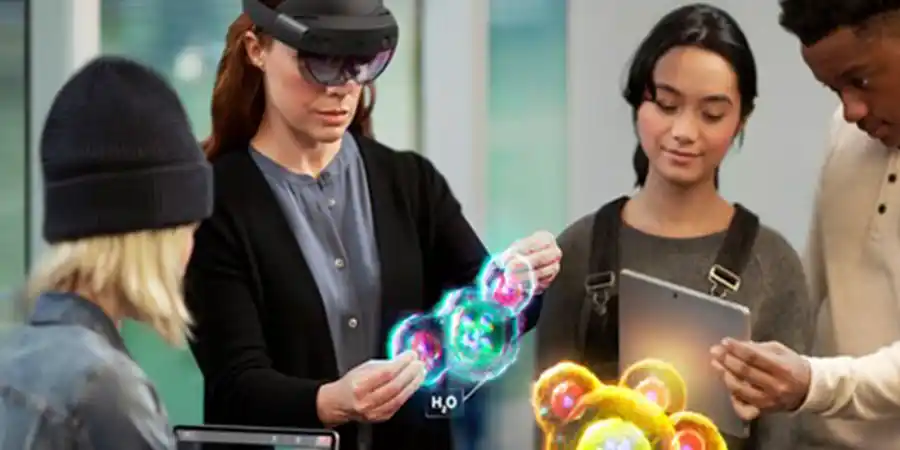Introduction
Mixed reality (MR) is a combination of technologies that combines real and virtual items. The exciting area where learning experiences are revolutionized by the seamless fusion of the physical and digital worlds. Virtual Reality (VR) and Augmented Reality (AR), two examples of Mixed Reality technologies, are more than just slogans these days: they’re revolutionizing traditional teaching methods and creating immersive, dynamic, and captivating learning environments.
The Emergence of Mixed Reality
Imagine a classroom where history is brought to life, allowing students to engage with historical characters, observe and stroll through ancient civilizations, and mark significant periods in history without ever leaving their desks. MR transforms how humans view and engage with information by superimposing digital content over the real world or submerging people in fully virtual settings.
Enhancing Learning Experiences
The capacity of mixed reality to make abstract concepts physical and difficult subjects easily understandable is one of its biggest educational benefits. MR enables educators to design dynamic, multimodal learning experiences that accommodate a variety of learning styles to explore the human body in three dimensions or perform virtual science experiments.

Motivating and Engaging
Conventional lectures and texts frequently fail to hold students’ interest and encourage a sincere desire to study. However, by putting them at the center of the instructional story, mixed reality can turn passive learners into active participants. Using interactive simulations, gamification of lessons, and peer collaboration, MR not only boosts student engagement but also inspires them.
Accessibility and Inclusivity
Although it is a key tenet of inclusive education, kids with a variety of learning needs may encounter obstacles in typical classroom settings. These obstacles may be overcome via mixed reality, which offers individualized learning experiences that are tailored to each learner’s interests and skill level. MR encourages accessibility and makes ensuring that every learner has the chance to succeed, whether it means developing inclusive virtual environments. For students with mobility impairments, giving visual help for dyslexic students or providing audio descriptions for visually impaired students.
Challenges and Considerations
Mixed Reality has enormous educational potential but integrating it into traditional pedagogy is not without its difficulties. Teachers and institutions face several challenges, including financial constraints, technological limits and the requirement for teacher preparation.
Furthermore, to avoid escalating already-existing educational inequities, it is imperative to guarantee equitable access to MR technology. But these difficulties may be overcome with careful preparation, teamwork and an innovation-focused mindset, opening the door to a more diverse and engaging learning environment.
Conclusion
It’s obvious that mixed reality has great potential to change teaching and learning as traverses the always changing field of education. Through MR, educators can develop immersive, engaging, and inclusive learning experiences that stimulate creativity, spark curiosity, and equip students for the challenges of the twenty-first century. By bridging the gap between the physical and digital worlds. Let’s seize the chance that mixed reality offers to transform education and realize every learner’s potential as we begin to harness its power.
– Dr.Pavithra. K, Assistant Professor
– Dr.Linen, Professor and Head -Computer Applications
– Dr. Rajasekar Rangasamy, Professor
– Dr R C Karpagalakshmi, Professor
Department of Computer Science and Engineering, Alliance University
